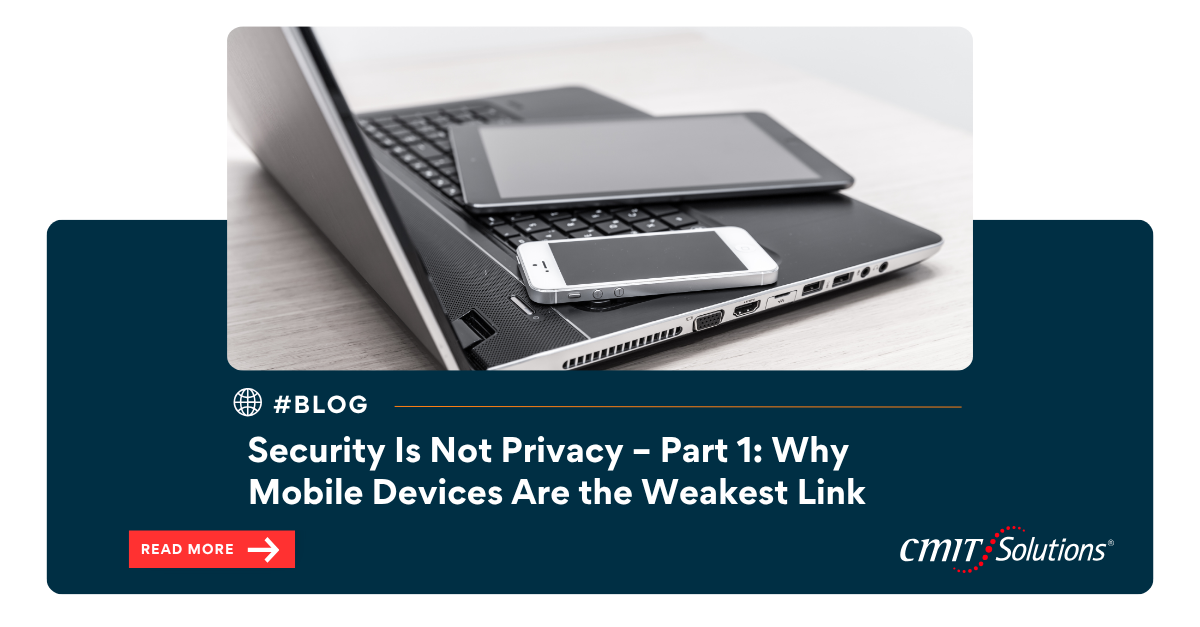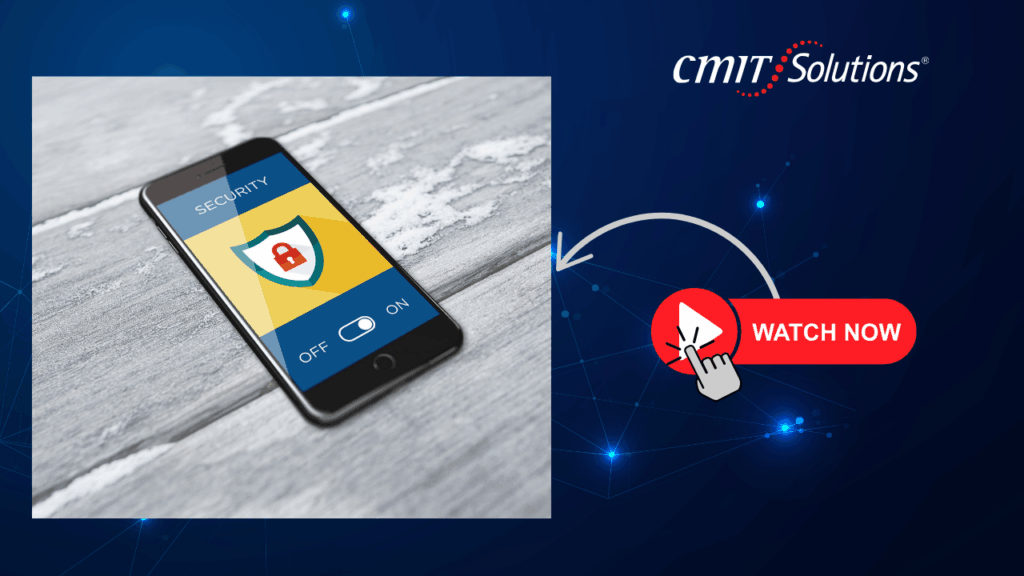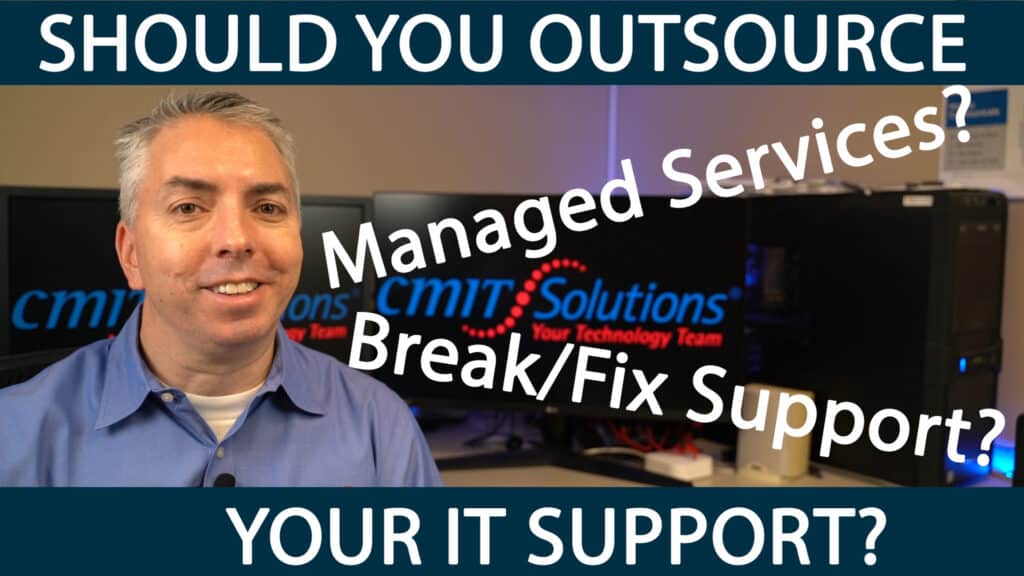In the ever-evolving digital landscape, small and mid-sized businesses must stay vigilant—not just about who can access their data, but how that data is observed, used, and shared. At CMIT Solutions of Oak Park, Hinsdale & Oak Brook, we believe it’s time to get precise about the difference between information security and information privacy—two concepts often mistakenly treated as interchangeable.
Why Definitions Matter in IT
In technology, definitions shape understanding—and misunderstanding them can lead to critical business mistakes. Consider two closely related concepts: security and privacy.
- Security means preventing unauthorized access or alteration of your data.
- Privacy means preventing third parties from observing your activity or accessing your data without your explicit consent.
In short, privacy includes security, but security does not guarantee privacy.
Real-World Examples: Secure but Not Private
Take Spotify, for instance. The music you stream is secure because it’s encrypted and accessible only through the app. However, it’s not private—anyone with an email can listen. Similarly, on social media platforms, your data may be encrypted and well-defended against unauthorized access, but it’s still handed off to numerous “authorized” partners. In both cases, your data is secure—but far from private.
This misunderstanding has real implications for business systems, cloud services, and even software platforms. If you’re transitioning between cloud environments, like moving from Google Workspace to Microsoft 365, understanding who can access what—and why—becomes even more crucial.
Mobile Devices: Securely Designed, But Not Privately Yours
One of the biggest misconceptions we encounter is around mobile devices. Many assume these are insecure because they lack privacy. In truth, they’re extremely secure—just not for your benefit.
Modern mobile operating systems are carefully engineered to:
- Sandbox applications, preventing them from accessing each other’s data
- Enforce app permission settings, giving you some control over what each app can access
- Restrict root access, minimizing malware risks
But all of these features primarily serve the OS vendor, not necessarily the user. These tools make it harder for third parties to access data—while still allowing the OS itself to track, analyze, and store enormous volumes of behavioral data.
This is one reason mobile operating systems, while helpful in preventing email threats and running secure apps, can’t offer true privacy. Even security tools integrated into devices are largely intended to protect proprietary data from competitors, not to shield your behavior from the platform provider.
Who Really Controls Your Data?
Mobile security features benefit the OS developer far more than the end user. Most users can’t control or audit what built-in apps do. Some permissions may even be ignored by native apps running in the background. And while these restrictions are excellent for stopping malware, they also ensure that you don’t have full control over your own device.
This concern isn’t unique to mobile phones. When SMBs adopt enterprise cloud systems or rely on generative AI platforms, it’s just as important to assess not only how secure your systems are—but how private they remain.
Why This Matters for SMBs
For businesses in Oak Park, Hinsdale, and Oak Brook, this confusion can lead to poor IT investments or overconfidence in mobile protection. For example:
- A company might implement mobile device management (MDM) tools like Microsoft Intune assuming it delivers complete privacy, when in reality it only enforces internal policy compliance.
- Leaders may rely on mobile-first work environments, thinking that encrypted apps mean private data, when third-party apps and background OS services may still be collecting data.
- Teams might develop apps without considering how sandboxing or permission limitations could affect user trust, as seen in medical or productivity applications like this doctor-finding app.
Taking Action: Strategies for Real Security and Privacy
To achieve both security and privacy, businesses need a multi-layered IT strategy. That means:
- Implementing zero-trust network architectures
- Using advanced SIEM tools to monitor and limit exposure
- Leveraging endpoint protection, especially across mobile and BYOD environments
- Proactively developing disaster recovery plans that ensure sensitive data stays private, even during breaches
CMIT Solutions also helps organizations understand how to reduce AI risks and leverage predictive analytics without compromising security or privacy.
Conclusion: Know the Difference, Make Smarter Choices
Security isn’t a synonym for privacy—and treating it as such can leave your organization vulnerable. With mobile devices especially, what protects your data from attackers may not shield it from platform vendors, app developers, or even internal misuse.
At CMIT Solutions of Oak Park, Hinsdale & Oak Brook, we help businesses strike the right balance. From developing secure collaboration strategies to managing cloud complexity and securing every endpoint, we ensure that your systems are not only locked down—but also under your control.
Let us help you rethink security and privacy from the ground up—because understanding the difference could make all the difference for your business.







